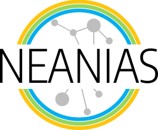The peer-review article “A new view of observed galaxies through 3D modelling and visualisation”, by University of Portsmouth and collaborators, has been published in the journal Astronomy and Computing.
"A new view of observed galaxies through 3D modelling and visualisation”
- Authors: Tim Dykes (1), Claudio Gheller (2), B. S. Koribalski (3), K. Dolag (4) and Mel Krokos (5).
- Affiliations: (1) HPE HPC/AI EMEA Research Lab, Bristol, United Kingdom, (2) Institute of Radioastronomy, INAF. Via P. Gobetti, 101 40129 Bologna, Italy, (3) CSIRO Astronomy and Space Science, Australia Telescope National Facility, P.O. Box 76, Epping, NSW 2121, Australia, (4) Universitäts-Sternwarte München, Scheinerstr.1, D-81679 München, Germany, (5) School of Creative Technologies, University of Portsmouth, Eldon Building, Winston Churchill Avenue, Portsmouth, United Kingdom.
Abstract
Observational astronomers survey the sky in great detail to gain a better understanding of many types of astronomical phenomena. In particular, the formation and evolution of galaxies, including our own, are a wide field of research. Three dimensional (spatial 3D) scientific visualisation is typically limited to simulated galaxies, due to the inherently two dimensional spatial resolution of Earth-based observations. However, with appropriate means of reconstruction, such visualisation can also be used to bring out the inherent 3D structure that exists in 2D observations of known galaxies, providing new views of these galaxies and visually illustrating the spatial relationships within galaxy groups that are not obvious in 2D. We present a novel approach to reconstruct and visualise 3D representations of nearby galaxies based on observational data using the scientific visualisation software Splotch. We apply our approach to a case study of the nearby barred spiral galaxy known as M83, presenting a new perspective of the M83 local group and highlighting the similarities between our reconstructed views of M83 and other known galaxies of similar inclinations.
Acknowledgement
KD acknowledges support by the ORIGINS cluster, funded by the Deutsche Forschungsgemeinschaft (DFG, German Research Foundation) under Germany’s Excellence Strategy, EXC-2094, 390783311. MK acknowledges support by NEANIAS, funded by the EC Horizon 2020 research and innovation programme under Grant Agreement No. 863448.
The article can be found in the journal Astronomy and Computing., Volume 34, January 2021, 100448 (DOI: 10.1016/j.ascom.2021.100448).
